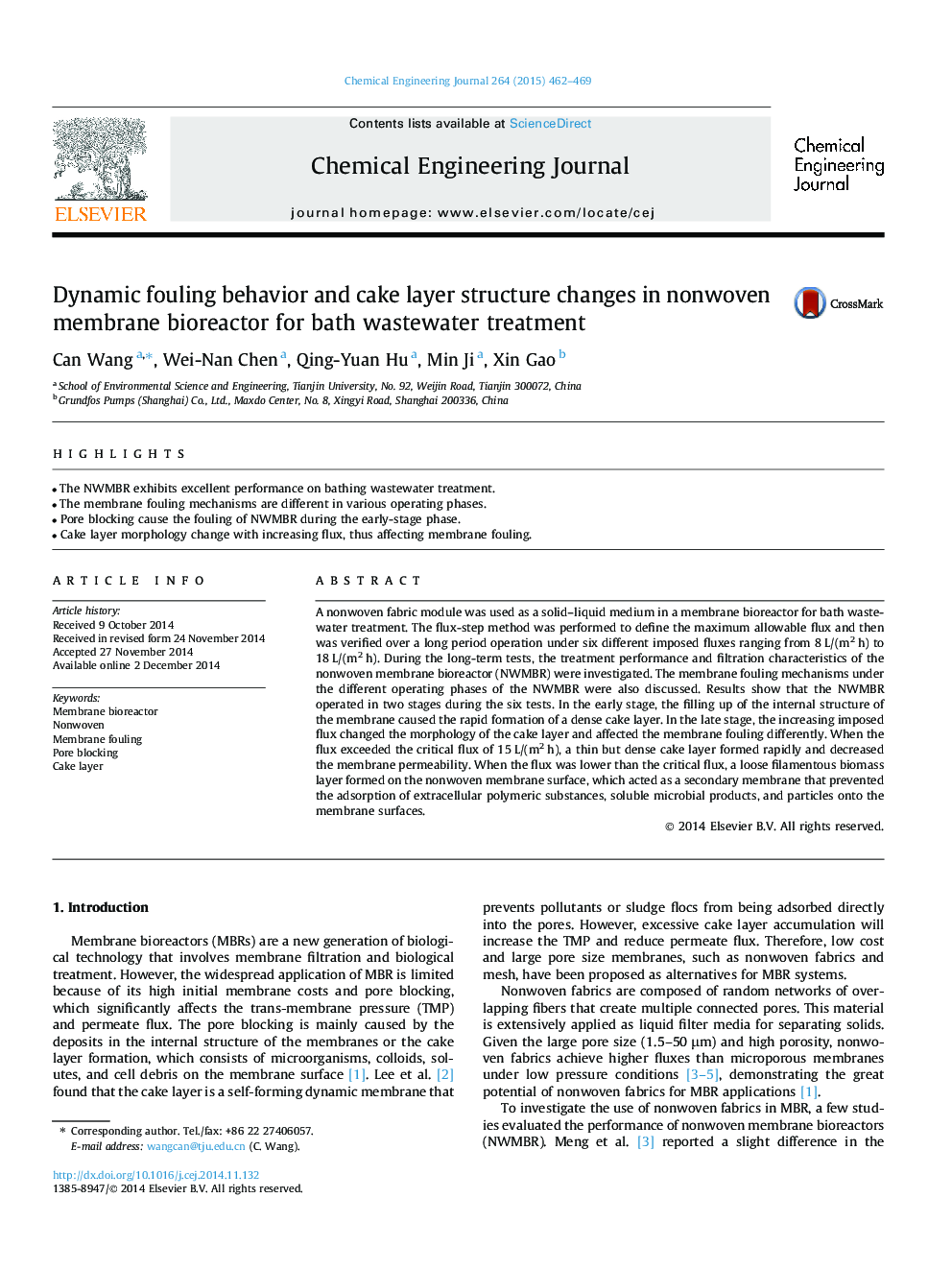| Article ID | Journal | Published Year | Pages | File Type |
|---|---|---|---|---|
| 146854 | Chemical Engineering Journal | 2015 | 8 Pages |
•The NWMBR exhibits excellent performance on bathing wastewater treatment.•The membrane fouling mechanisms are different in various operating phases.•Pore blocking cause the fouling of NWMBR during the early-stage phase.•Cake layer morphology change with increasing flux, thus affecting membrane fouling.
A nonwoven fabric module was used as a solid–liquid medium in a membrane bioreactor for bath wastewater treatment. The flux-step method was performed to define the maximum allowable flux and then was verified over a long period operation under six different imposed fluxes ranging from 8 L/(m2 h) to 18 L/(m2 h). During the long-term tests, the treatment performance and filtration characteristics of the nonwoven membrane bioreactor (NWMBR) were investigated. The membrane fouling mechanisms under the different operating phases of the NWMBR were also discussed. Results show that the NWMBR operated in two stages during the six tests. In the early stage, the filling up of the internal structure of the membrane caused the rapid formation of a dense cake layer. In the late stage, the increasing imposed flux changed the morphology of the cake layer and affected the membrane fouling differently. When the flux exceeded the critical flux of 15 L/(m2 h), a thin but dense cake layer formed rapidly and decreased the membrane permeability. When the flux was lower than the critical flux, a loose filamentous biomass layer formed on the nonwoven membrane surface, which acted as a secondary membrane that prevented the adsorption of extracellular polymeric substances, soluble microbial products, and particles onto the membrane surfaces.
